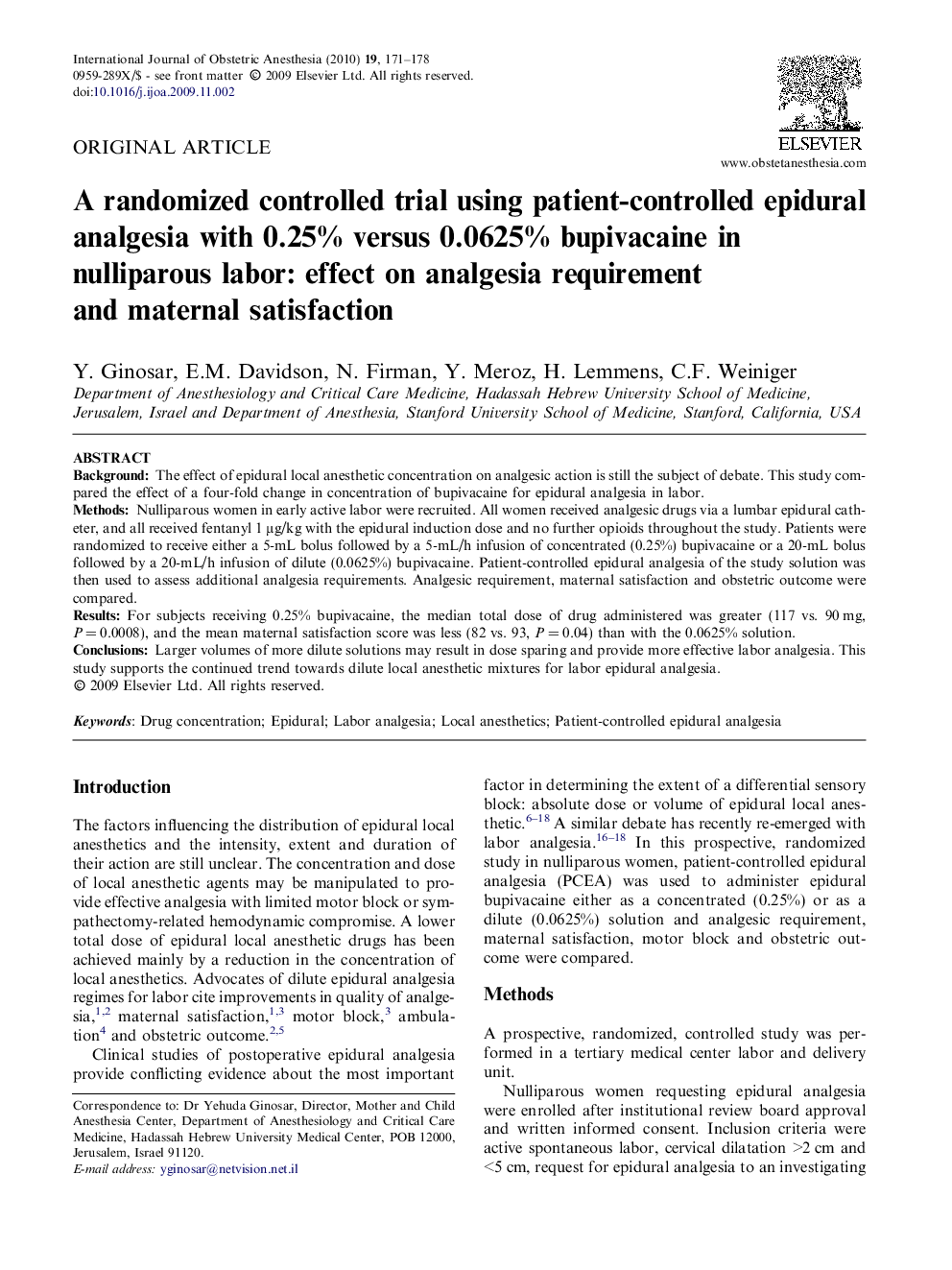| Article ID | Journal | Published Year | Pages | File Type |
|---|---|---|---|---|
| 2757987 | International Journal of Obstetric Anesthesia | 2010 | 8 Pages |
BackgroundThe effect of epidural local anesthetic concentration on analgesic action is still the subject of debate. This study compared the effect of a four-fold change in concentration of bupivacaine for epidural analgesia in labor.MethodsNulliparous women in early active labor were recruited. All women received analgesic drugs via a lumbar epidural catheter, and all received fentanyl 1 μg/kg with the epidural induction dose and no further opioids throughout the study. Patients were randomized to receive either a 5-mL bolus followed by a 5-mL/h infusion of concentrated (0.25%) bupivacaine or a 20-mL bolus followed by a 20-mL/h infusion of dilute (0.0625%) bupivacaine. Patient-controlled epidural analgesia of the study solution was then used to assess additional analgesia requirements. Analgesic requirement, maternal satisfaction and obstetric outcome were compared.ResultsFor subjects receiving 0.25% bupivacaine, the median total dose of drug administered was greater (117 vs. 90 mg, P = 0.0008), and the mean maternal satisfaction score was less (82 vs. 93, P = 0.04) than with the 0.0625% solution.ConclusionsLarger volumes of more dilute solutions may result in dose sparing and provide more effective labor analgesia. This study supports the continued trend towards dilute local anesthetic mixtures for labor epidural analgesia.
